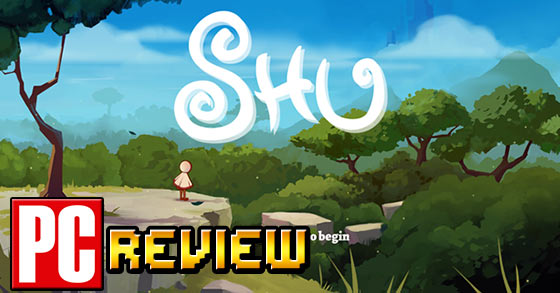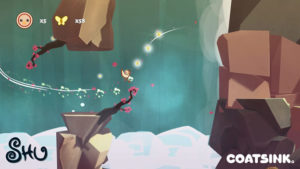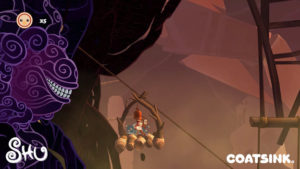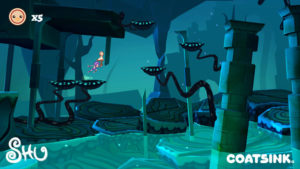SHU PC review – A sweet but too short 2.5D platformer

Going into “SHU”, I was worried its trouble development history had produced a game that prioritized style over substance. I’m sorry to say that “SHU” looks better than it plays. As the game looks great, the gameplay isn’t all bad.
SHU’s story begins with Shu, the titular playable character, learning about a village destroying storm that shows up moments later to. You guessed it, destroy his village. The villagers flee but Shu ends up separated from his friends. Shu’s mission is to reach an ancient tower that will deal with the storm while reuniting with his friends along the way. Apart from the opening and ending cutscenes, the plot of “SHU” is practically non-existent and acts as a vehicle for the gameplay.
Alone, Shu can only run, jump and glide but with friends he can smash through walls, run on water and slow down time to name a few of the many powers the villagers bring. These powers allow alternate routes to be taken as well as opening up avenues to the many collectibles that’s been scattered throughout SHU’s levels.
Unfortunately, “SHU” introduces these villagers as quickly as it removes them, meaning there is little time to combine powers in interesting ways. Shu’s moveset being so dialled back, he is unable to wall jump or double jump without having the respective villages in tow. This hindered the level design of Shu only sections, which are overly simple to be tedious at times. These comparatively dull moments made me miss the mobility added by the villagers. The final level brings in all of the villagers in a long storm chase, swapping pairs out every so often so that players have to fully utilise the movement options each character brings. Another memorable level involved darting from one safe zone to another to avoid being struck by lightning. Overall though, SHU’s level design is rarely challenging and somewhat repetitive.
Aesthetically, “SHU” is gorgeous. It’s hand-drawn art is charming and younger players will definitely enjoy the cartoon-like visuals. The soundtrack is often subdued and quiet, which creates a calm mood that is only broken when the storm shows up to ruin Shu’s day.
SHU’s biggest flaw is how long it lasts. Even with the six levels added by the free Caverns Of The Nightjars DLC, “SHU” only has a meagre 21 levels. This meant my first playthrough took just over three hours, but SHU’s replayability is extended somewhat by the time trial modes unlocked for each level. These forced me to skip past the collectibles within the level which, again, add to SHU’s length. That being said, I wasn’t gripped by SHU enough to want to master each level, which involves collecting all of the collectibles and beating set time trials
All in all, CoatSink and Secret Lunch’s collaboration seems to have worked just as well as Shu and his friends, because my time with “SHU” was enjoyable with no doubt. However, the enjoyment was too short, and I was left wanting more. So whether or not we’ll see a sequel is up to the developers.
Pros:
+ Cute hand-drawn art style
+ Effective used soundtrack
+ Accessible to unskilled and new players
Cons:
– Underdeveloped plot
– Unchallenging levels
– Short playtime
Gameplay: 3/5
Graphics: 4/5
Sound and music: 4/5
Controls: 3/5
Replay value: 3/5

Verdict: 3/5
If you’re looking for a challenging game to sink your time into, look elsewhere, but if you want a short, relaxing and sweet 2.5D platformer. Then “SHU” is the game for you.
Title: SHU
Developer: CoatSink % Secret Lunch
Format: PC
Genre: Platformer
Resolution: 1920 x 1080
Release date: 2016-10-04
Difficulty: Low
Spent time: +5 Hours
Average grade internationally: 85% Metacritic.com
PEGI age rating: 7+
Price: £8.99 Steam
Credit:
Robin Ek – Editor
Liam Hobbs
The Gaming Ground
Twitter: @LiamJHobbs
More by Guest Author:
- Farming Simulator 25 mods – downloading, installing & more
- Here are the top five most popular games of 2024 you need to play
- The role of music and soundtracks in creating immersive gaming worlds
- FS25 is coming this Fall (2024) with a large selection of mods
- How technology and social media have influenced the gambling industry
Tags: 2.5D platformer, Coatsink, Indie games, PC games, PC review, Secret Lunch, Shu
























